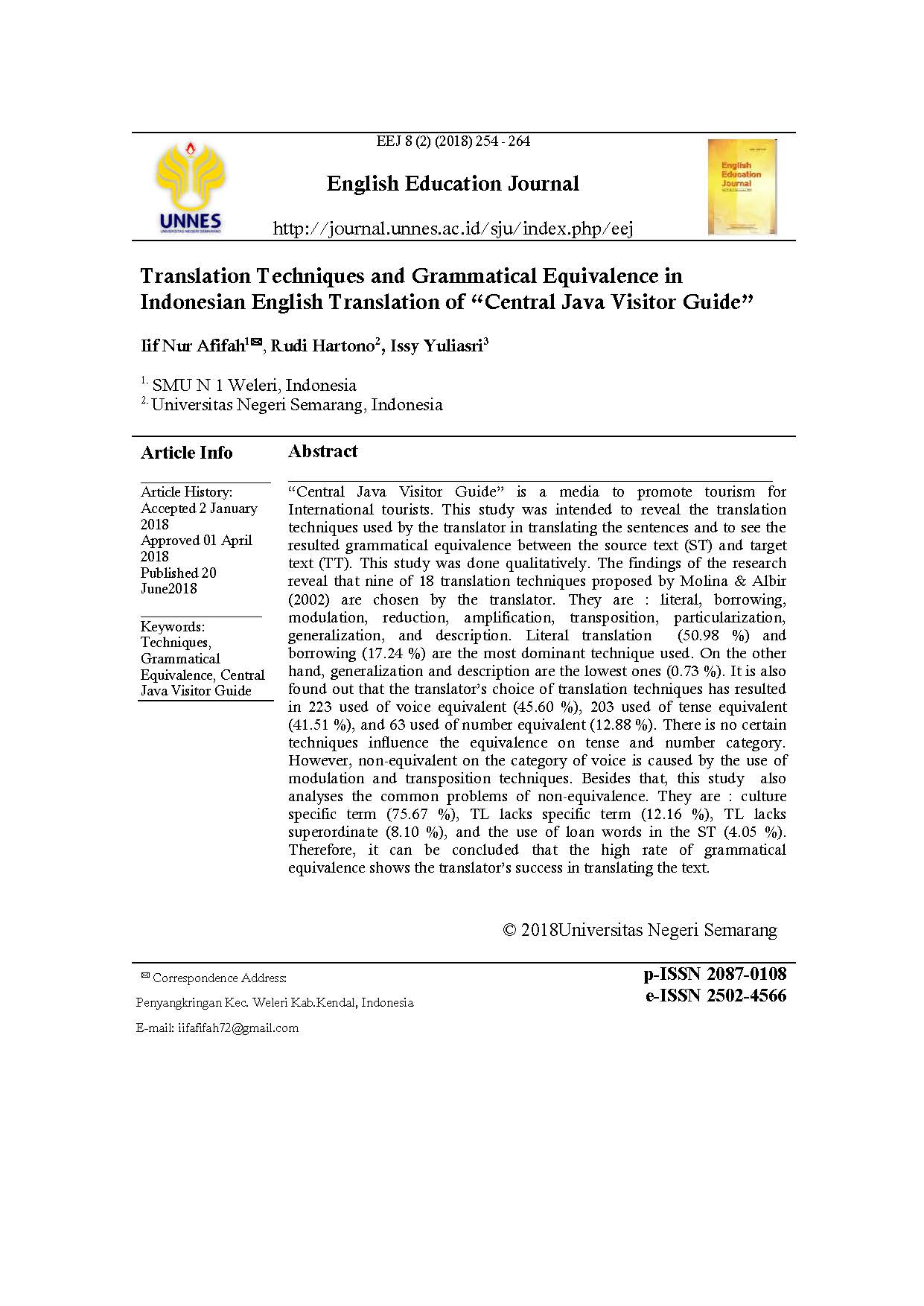Translation Techniques and Grammatical Equivalence in Indonesian English Translation of “Central Java Visitor Guideâ€
##plugins.themes.academic_pro.article.main##
Abstract
“Central Java Visitor Guide†is a media to promote tourism for International tourists. This study was intended to reveal the translation techniques used by the translator in translating the sentences and to see the resulted grammatical equivalence between the source text (ST) and target text (TT). This study was done qualitatively. The findings of the research reveal that nine of 18 translation techniques proposed by Molina & Albir (2002) are chosen by the translator. They are : literal, borrowing, modulation, reduction, amplification, transposition, particularization, generalization, and description. Literal translation (50.98 %) and borrowing (17.24 %) are the most dominant technique used. On the other hand, generalization and description are the lowest ones (0.73 %). It is also found out that the translator’s choice of translation techniques has resulted in 223 used of voice equivalent (45.60 %), 203 used of tense equivalent (41.51 %), and 63 used of number equivalent (12.88 %). There is no certain techniques influence the equivalence on tense and number category. However, non-equivalent on the category of voice is caused by the use of modulation and transposition techniques. Besides that, this study also analyses the common problems of non-equivalence. They are : culture specific term (75.67 %), TL lacks specific term (12.16 %), TL lacks superordinate (8.10 %), and the use of loan words in the ST (4.05 %). Therefore, it can be concluded that the high rate of grammatical equivalence shows the translator’s success in translating the text.
